3 things you need to be a creative director
What do you need to move from designer to creative director? Pete Sena gives some pointers.

As a designer, your go-to means for getting the job done likely includes some combination of Adobe's Creative Cloud, Google, and good old-fashioned brain power. When making the shift from designer to creative director, however, expect that list to include far more your standard tools.
Amassing the resources necessary to manage and inspire a team, cultivate and develop new business for your agency, and stay on top of the latest and greatest happenings in the industry... well, that all requires one hell of a toolbox.
What is creative direction?
We should probably begin by clarifying what 'creative direction' actually means. I think Dan Mall said it best when he noted:
"Creative Direction is the intersection where art direction and design meet strategy."

Ah strategy... It might just be the most loaded term you'll encounter throughout your career. So why is its actual meaning so often overlooked? That's because – not unlike most marketing buzzwords – it's regarded as trite and played out. But it's true-to-form strategy that allows a creative director to grow his or her toolbox into the stockpile of formidable resources needed to carry out the job.
Without it, you're looking at a rusty case containing no more than a few designer-level skills.
So how exactly can you tap into your strategic self while ascertaining the know-how of a creative director? I'll now address the three most important skills to build upon in your professional toolbox.
Get the Creative Bloq Newsletter
Daily design news, reviews, how-tos and more, as picked by the editors.
01. Capacity for critical thought
Creative thinker. Business therapist. Two sides of the same coin here. Now given that most creative directors have risen in rank from designer/copywriter onward, it's safe to assume the experience in creative thinking is there. It's developing your capacity for critical thought that might require additional work on your end. Fail to do that and chances are you'll find yourself focusing too much of your energy on how a project looks and sounds, and not enough on how it will drive results for your customers
It's also worth noting that when initially researching a client, the whos, whats, wheres, and whens will likely click right away (and if they don't, well, then we may have bigger fish to fry…). Exploring the why is meat of the matter, especially when it comes to developing workable strategies. And let's remember, of course, that effective strategy– no matter how overworked a term it may be– stands as the cornerstone of creative direction
Here are a few works with some rather unique insights on the differing strategies behind critical thought and modern day business savvy:
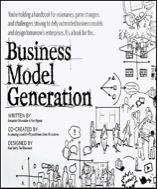
Business Model Generation is an amazing read. Since reading it over two years ago, the ways in which I interact with my customers have never quite been the same. It fundamentally changed my understanding of today's corporate vernacular, not to mention how I think at large about the building blocks of business. As a visual learner, I particularly loved the way illustrations, diagrams, and other graphics were used to break down the many types of businesses out there, as well as the shapes and sizes of each.
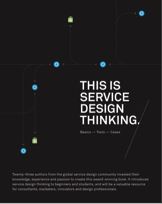
Think of This is Service Design Thinking as a handbook in problem solving, creative director-style. This book offers readers an alternative look at design theory by incorporating elements of contextual empathy on behalf of the user. A few terms to keep in mind while reading this one: design thinking, facilitation, and team collaboration, as well as user and design research. I'd say without reservation that this one's a must-read for any active or aspiring creative director (or any marketer for that matter)
No matter the setting (agency, company, or "other"), successfully executed creative work is a team sport. As the creative director, you're often left straddling the line between teammate and team leader (and even snake charmer, if you ask design leader Mike Monterio)
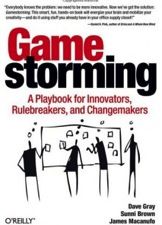
Gamestorming describes various methods of team collaboration that are both fruitful and fun. It acts as a playbook for marketers looking to shake up the frameworks they use for co-creation and ideation.
Still not convinced by the title's tenets? Check out what some of marketing's most brilliant minds have to say about gamestorming and "why it works."
02. A love affair with data
Your ability to get 'dirty with the data' often depends on the size of your company and specific role. That being the case, I strongly recommend you get as hands on with the analytics as possible.
Learning to connect the dots in data is of utmost importance for any digital creative director. Platforms like Google Analytics, Omniture, and Optimizely are relatively simple to learn and have an incredible ROI when it comes to time invested. As a well-researched marketer, you'll quickly establish your worth in any roundtable discussion
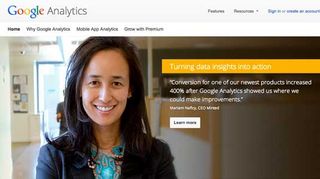
Similarly, understanding concepts like measurement plans and key performance indicators will help you when it comes time to talk big picture digital analytics. And I can assure that's one skill any employer or client will look for in a creative leader
03. Ability to present
Let's face it, being a creative director these days means that you're most likely spending the bulk of your time communicating and presenting designs, not necessarily creating them. That being said, you'll rarely find a creative director these days who isn't a Keynote ninja. After all, just about any presentation you give hinges on having a well built, eye-catching deck. So if you think your slide skills could use some work, here are a few pieces of advice...
Practice: C'mon, by now you know the drill. If you aren't fluent in any deck-building platforms, then get your ass in gear and start learning. Fiddle around, find online tutorials, figure out what tools are hidden in which dropdown by going in and actually practicing. If you have what it takes to be a creative director, you'll find these sort of technical skills come second nature if you simply dedicate the time to hone them
Hacks help get the job done: Who says software has to be used exactly as it's built? Discovering workarounds that enable efficiencies on your end is always encouraged. For example, I found the color picker built into OSX somewhat limiting, especially coming off a career spent in Adobe's myriad of software apps. So I dug around for possible alternatives, and ultimately landed on this downloadable ⦁ color picker add-on. It allows you to search and incorporate colors based on their HEX values, a capability any digital designer wants in his or her back pocket.
Learn from the best: In your quest for deck-building hacks, it's important to read up on what the pros are saying. Two of the best books for elucidating the ins and outs of presentations include:
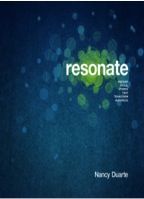
Resonate: In this book, well-known writer and graphic designer Nancy Duarte explores a number of proven techniques for transforming any presentation into what she describes as "an engaging journey". For us creative directors, it's imperative that we maintain a thorough command of the spoken word in such a way that elicits any number of desired responses from clients, co-workers, and beyond. This book spells out the how-tos behind these key communicative skills.
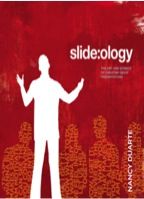
Slide:ology: It just so happens that another fantastic exploration on the art (and science) of powerful presentations comes from the same author that brought us Resonate. Here, Duarte takes a closer look at the tactics behind "effective visual expression". From the sketching of diagrams to the creation of each slide, she takes readers through a step-by-step breakdown of the presentation-making skills central to a CD's work.
Now while I build most of my decks in Keynote these days, you're by no means restricted to that or it's commonly used counter platform, PowerPoint. With tools like PREZI, Sliderocket, or even Google Presentation, you now have ample software options at your disposal.
Your own toolbox
Now that you know the contents of a successful creative director's toolbox, it's on you to fill yours. You can start by making it a point to read every day. The best creative directors are students of their craft
I want to know, what's in your creative toolbox? Any ideas, software, or books you can't live without? Share your favorite resources with me at @petesena
Words: Pete Sena
Pete Sena is the founder of Digital Surgeons, a digital marketing agency in New Haven, CT. A hybrid designer/developer who lives to create unique and powerful experiences for brands, if Pete ever takes a break he's probably reading, teaching himself something, attacking Crossfit or snowboarding.

Thank you for reading 5 articles this month* Join now for unlimited access
Enjoy your first month for just £1 / $1 / €1
*Read 5 free articles per month without a subscription

Join now for unlimited access
Try first month for just £1 / $1 / €1
The Creative Bloq team is made up of a group of design fans, and has changed and evolved since Creative Bloq began back in 2012. The current website team consists of eight full-time members of staff: Editor Georgia Coggan, Deputy Editor Rosie Hilder, Ecommerce Editor Beren Neale, Senior News Editor Daniel Piper, Editor, Digital Art and 3D Ian Dean, Tech Reviews Editor Erlingur Einarsson and Ecommerce Writer Beth Nicholls and Staff Writer Natalie Fear, as well as a roster of freelancers from around the world. The 3D World and ImagineFX magazine teams also pitch in, ensuring that content from 3D World and ImagineFX is represented on Creative Bloq.
